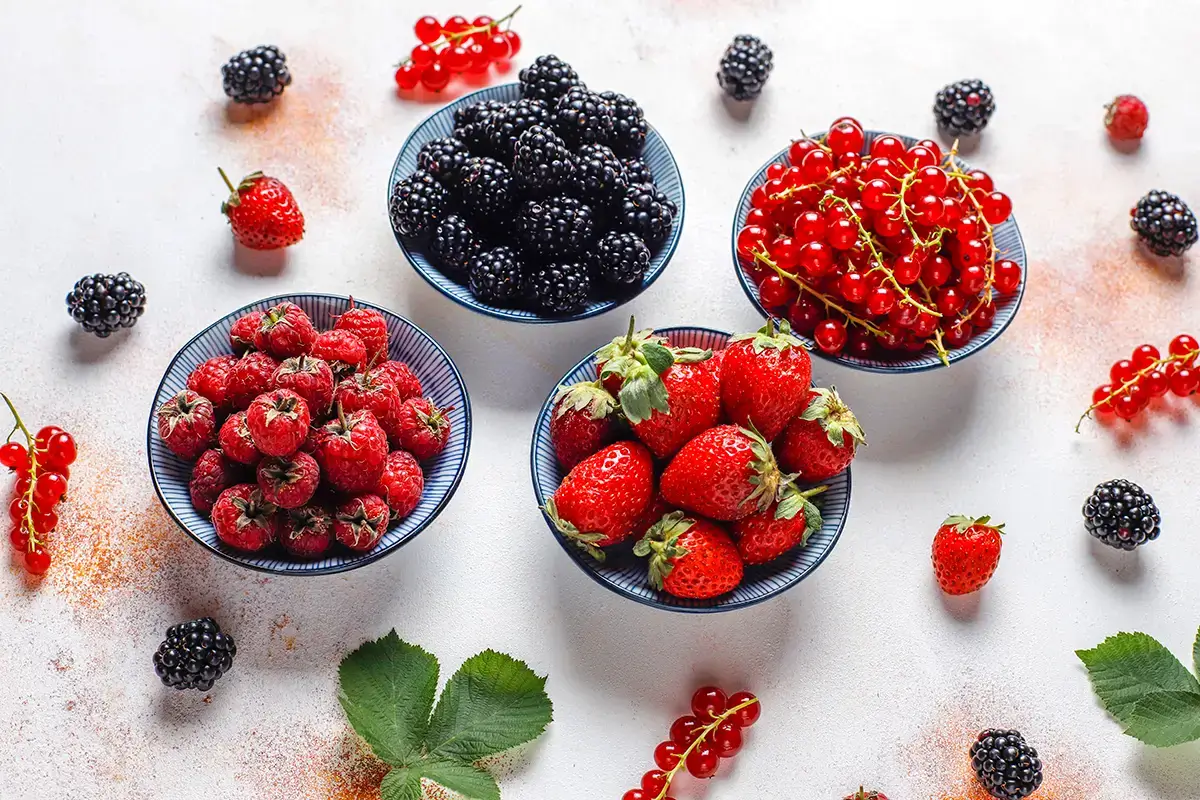Incorporating Red Fruits into Your Diet: Benefits and Practical Tips
Red fruits, such as strawberries, raspberries, cherries, and blackberries, are known not only for their delicious taste but also for their impressive nutritional properties and health benefits. They are an excellent source of vitamins, minerals, and antioxidants, which play a crucial role in promoting overall health and preventing diseases. Including red fruits in your daily diet can be a tasty and effective way to enhance nutrition and well-being.
According to the World Health Organization (WHO), a diet rich in fruits and vegetables is associated with a significant reduction in the risk of several chronic diseases, including cardiovascular diseases and some types of cancer (WHO, 2023). Red fruits are especially notable for their high antioxidant content, such as anthocyanins and flavonoids, which help combat free radicals in the body. These antioxidants are responsible for the vibrant color of red fruits and have been linked to significant health benefits, such as reduced inflammation and improved brain function.
In addition to their antioxidant value, red fruits are rich in essential vitamins and minerals. For example, strawberries and raspberries are good sources of vitamin C, which is crucial for the immune system and skin health. Recent studies indicate that a serving of strawberries can provide more than 100% of the recommended daily intake of vitamin C (Journal of Nutritional Science, 2022). Additionally, red fruits contain dietary fiber, which is important for digestion and heart health.
The Ministry of Health of Brazil recommends including a variety of fruits in the diet, highlighting the importance of consuming nutrient-rich fruits like red ones. These fruits not only provide nutritional benefits but are also versatile and can be easily incorporated into various meals. According to dietary guidelines, it is recommended to consume at least 400 grams of fruits and vegetables per day, which can be easily achieved by adding red fruits to your diet (Ministry of Health, 2023).
Including red fruits in your daily diet can be simple and enjoyable. Here are some suggestions for adding these fruits to your diet:
- Smoothies and Shakes: Add a portion of red fruits to your morning smoothie or shake. They can be blended with yogurt, milk, or a plant-based beverage to create a nutritious and flavorful drink.
- Fruit Salads: Prepare a mixed fruit salad with strawberries, raspberries, and blackberries. This is a refreshing and delicious way to consume a variety of red fruits at once.
- Yogurt and Cereals: Combine fresh or frozen red fruits with natural yogurt and whole-grain cereals for a healthy and balanced snack.
- Desserts: Use red fruits to make desserts such as pies, jams, and compotes. They add natural sweetness and reduce the need for added sugars.
- Toppings and Additions: Add red fruits to pancakes, waffles, or toast for a sweet and healthy touch. They can also be used as toppings for porridge and desserts.
In addition to the methods above, it’s important to consider consuming fresh and seasonal red fruits whenever possible. Although frozen red fruits are also a practical and nutritious option, fresh ones often offer a more intense flavor and higher nutritional value. Incorporating a variety of red fruits into your diet not only improves nutrient intake but also makes meals more enjoyable and diverse.
In summary, red fruits are a valuable component of a balanced diet, offering a range of health benefits. By including these fruits in your daily diet, you can enjoy their antioxidant and nutritional benefits, contributing to better overall health and a healthier lifestyle. Always consult a healthcare professional or nutritionist to tailor recommendations to your individual needs.
Sources Consulted:
- World Health Organization (WHO)
- Ministry of Health of Brazil
- Journal of Nutritional Science
- Brazilian Society of Cardiology
Image by azerbaijan_stockers on Freepik














